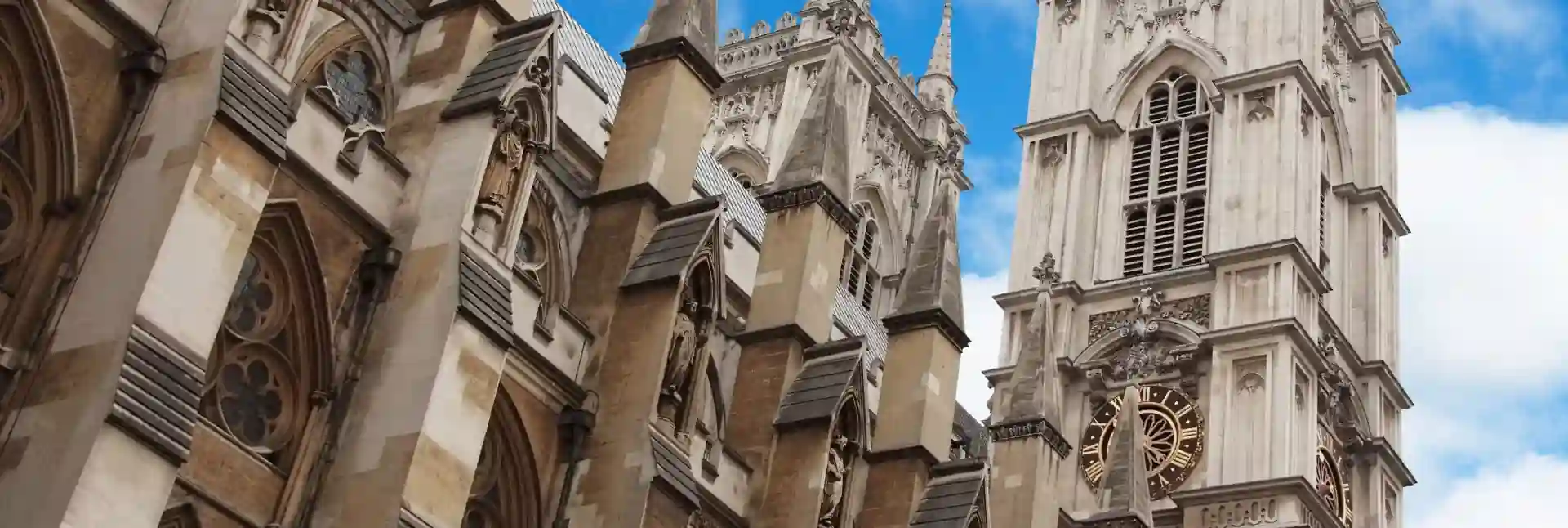
What to See in Westminster Abbey: Highlights You Can’t Miss
Declared a UNESCO World Heritage Site, this abbey is not only an architectural treasure, but also the setting for coronations, royal weddings, and the burials of great British figures. Walking through its many corners feels like stepping into a storybook, sparking countless images in your mind. If you're planning a visit, don’t hesitate to buy tickets to Westminster Abbey. Here’s what you can’t miss.
What to See in Westminster Abbey: Unmissable Spots
The Nave and the Transept: A Grand Welcome
Upon entering through the main door, the first thing that captures your attention is the central nave. Here, Gothic design unfolds in all its glory: towering columns, ribbed vaults, and an atmosphere built to inspire awe.
The abbey’s main nave, designed in English Gothic style, stands out for its great height (the tallest in England), slender columns, and ribbed vaults that create a sense of verticality and lightness. Above, stained glass windows allow natural light to pour in, illuminating the light stone walls and creating a solemn ambiance.
The Choir and the High Altar: The Heart of Ceremonies
As you walk through the nave, you’ll reach the choir, a more intimate yet equally impressive area. Just beyond, the high altar is crowned by a stunning mosaic tile floor known as the Cosmati Pavement, installed in 1268, where coronation ceremonies take place. The richness of detail here is overwhelming: wood carvings, banners, and historically significant chairs like the famous St Edward’s Chair, used in every royal coronation.
It’s a space worth pausing in, taking in your surroundings, and imagining yourself in another time—especially if you’re lucky enough to visit during a moment of silence.
Poets’ Corner: A Tribute to Culture
One of visitors’ favorite spots is undoubtedly the Poets’ Corner, located in the south transept. Here lie or are commemorated some of the most illustrious names in English literature: Geoffrey Chaucer, Charles Dickens, Rudyard Kipling, and William Shakespeare (though he isn’t buried here, he does have a monument).
This area is not only moving for its content, but for what it represents: a national tribute to culture and thought. The inscriptions, busts, and tombstones reflect a deep love of the arts, and it’s impossible not to feel part of a cultural heritage that spans centuries.
The Cloister and Garden: Serenity Among Medieval Walls
From the south transept, you can exit to the cloister, where the atmosphere completely changes. This is a place for quiet reflection where monks used to walk and meditate. Surrounded by Gothic arches and centuries-old walls, the cloister is the perfect spot for a break.
Henry VII’s Lady Chapel: A Gothic and Royal Gem
One of the most breathtaking areas is the Lady Chapel, also known as Henry VII’s Chapel. Added in the 16th century, it’s a marvel of the third phase of English Gothic. It features fan vaulting, wood carvings, and royal tombs, including those of Elizabeth I and Mary I.
Don’t forget to look up at the ceiling—its organic forms make the stone seem as if it’s floating. Also note the Banners of the Order of the Bath, which hang from the ceiling and add color and symbolism.
Side Chapels and Tombs: A Journey Through History
Beyond the main spaces, the Abbey is full of small side chapels, each with its own character and collection of tombs and monuments. You’ll find the burial sites of figures like Isaac Newton, Charles Darwin, Stephen Hawking, and other key names in the history of science and thought.
Every corner tells a chapter of British history. Worn marble, Latin inscriptions, and relief carvings—all bear witness to the passage of time and